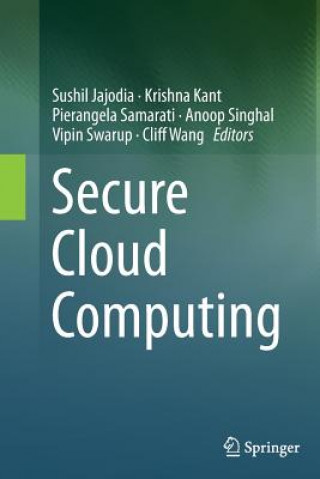
Kod: 13935089
Secure Cloud Computing
Autor Sushil Jajodia, Krishna Kant, Pierangela Samarati, Anoop Singhal, Vipin Swarup, Cliff Wang
This book presents a range of cloud computing security challenges and promising solution paths. The first two chapters focus on practical considerations of cloud computing. In Chapter 1, Chandramouli, Iorga, and Chokani describe t ... więcej
- Język:
 Angielski
Angielski - Oprawa: Miękka
- Liczba stron: 343
Wydawca: Springer-Verlag New York Inc., 2016
- Więcej informacji o książce

Zobacz książki o podobnej tematyce
-

The World of Minecraft
59.86 zł -

Found - the Rolling Stones
105.07 zł -4 % -

Hindu Literature, or, the Ancient Books of India
195.29 zł -

Famous Adventures And Prison Escapes of the Civil War
168.77 zł
Podaruj tę książkę jeszcze dziś
- Zamów książkę i wybierz "Wyślij jako prezent".
- Natychmiast wyślemy Ci bon podarunkowy, który możesz przekazać adresatowi prezentu.
- Książka zostanie wysłana do adresata, a Ty o nic nie musisz się martwić.
Więcej informacji o Secure Cloud Computing
Za ten zakup dostaniesz 308 punkty
 Opis
Opis
This book presents a range of cloud computing security challenges and promising solution paths. The first two chapters focus on practical considerations of cloud computing. In Chapter 1, Chandramouli, Iorga, and Chokani describe the evolution of cloud computing and the current state of practice, followed by the challenges of cryptographic key management in the cloud. In Chapter 2, Chen and Sion present a dollar cost model of cloud computing and explore the economic viability of cloud computing with and without security mechanisms involving cryptographic mechanisms. The next two chapters address security issues of the cloud infrastructure. In Chapter 3, Szefer and Lee describe a hardware-enhanced security architecture that protects the confidentiality and integrity of a virtual machine's memory from an untrusted or malicious hypervisor. In Chapter 4, Tsugawa et al. discuss the security issues introduced when Software-Defined Networking (SDN) is deployed within and across clouds. Chapters 5-9 focus on the protection of data stored in the cloud. In Chapter 5, Wang et al. present two storage isolation schemes that enable cloud users with high security requirements to verify that their disk storage is isolated from some or all other users, without any cooperation from cloud service providers. In Chapter 6, De Capitani di Vimercati, Foresti, and Samarati describe emerging approaches for protecting data stored externally and for enforcing fine-grained and selective accesses on them, and illustrate how the combination of these approaches can introduce new privacy risks. In Chapter 7, Le, Kant, and Jajodia explore data access challenges in collaborative enterprise computing environments where multiple parties formulate their own authorization rules, and discuss the problems of rule consistency, enforcement, and dynamic updates. In Chapter 8, Smith et al. address key challenges to the practical realization of a system that supports query execution over remote encrypted data without exposing decryption keys or plaintext at the server. In Chapter 9, Sun et al. provide an overview of secure search techniques over encrypted data, and then elaborate on a scheme that can achieve privacy-preserving multi-keyword text search. The next three chapters focus on the secure deployment of computations to the cloud. In Chapter 10, Oktay el al. present a risk-based approach for workload partitioning in hybrid clouds that selectively outsources data and computation based on their level of sensitivity. The chapter also describes a vulnerability assessment framework for cloud computing environments. In Chapter 11, Albanese et al. present a solution for deploying a mission in the cloud while minimizing the mission's exposure to known vulnerabilities, and a cost-effective approach to harden the computational resources selected to support the mission. In Chapter 12, Kontaxis et al. describe a system that generates computational decoys to introduce uncertainty and deceive adversaries as to which data and computation is legitimate. The last section of the book addresses issues related to security monitoring and system resilience. In Chapter 13, Zhou presents a secure, provenance-based capability that captures dependencies between system states, tracks state changes over time, and that answers attribution questions about the existence, or change, of a system's state at a given time. In Chapter 14, Wu et al. present a monitoring capability for multicore architectures that runs monitoring threads concurrently with user or kernel code to constantly check for security violations. Finally, in Chapter 15, Hasan Cam describes how to manage the risk and resilience of cyber-physical systems by employing controllability and observability techniques for linear and non-linear systems.
 Szczegóły książki
Szczegóły książki
Kategoria Książki po angielsku Computing & information technology Computer networking & communications Cloud computing
527.32 zł
- Pełny tytuł: Secure Cloud Computing
- Autor: Sushil Jajodia, Krishna Kant, Pierangela Samarati, Anoop Singhal, Vipin Swarup, Cliff Wang
- Język:
 Angielski
Angielski - Oprawa: Miękka
- Liczba stron: 343
- EAN: 9781493948833
- ISBN: 1493948830
- ID: 13935089
- Wydawca: Springer-Verlag New York Inc.
- Waga: 5387 g
- Wymiary: 235 × 155 × 21 mm
- Data wydania: 27. August 2016
Ulubione w innej kategorii
-

Infrastructure as Code
313.13 zł -10 % -

Mastering Proxmox - Third Edition
211.26 zł -

Official Google Cloud Certified Professional Data Engineer Study Guide
238.29 zł -11 % -
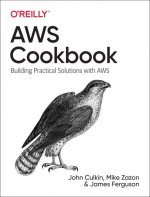
AWS Cookbook
313.13 zł -10 % -

Architecting the Cloud- Design Decisions for Cloud Computing Service Models (SaaS, PaaS, and IaaS)
238.29 zł -11 % -
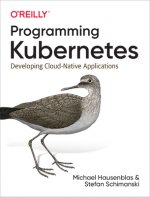
Programming Kubernetes
260.69 zł -11 % -
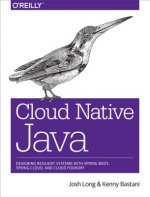
Cloud Native Java
346.38 zł -
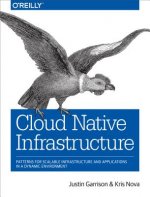
Cloud Native Infrastructure
159.02 zł -5 % -

97 Things Every Cloud Engineer Should Know
197.60 zł -5 % -

Architecting Cloud Computing Solutions
211.06 zł -

Cloud Native Transformation
324.58 zł -5 % -
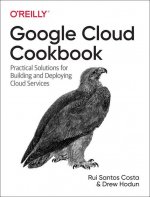
Google Cloud Cookbook
260.69 zł -11 % -
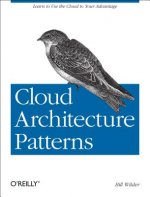
Cloud Architecture Patterns
92.92 zł -23 % -

Microsoft Hybrid Cloud Unleashed with Azure Stack and Azure
150.98 zł -15 % -

Ansible for Kubernetes by Examples
264.81 zł -4 % -

Cloud Computing in Easy Steps
70.01 zł -11 % -

CCNA Interview Questions You'll Most Likely Be Asked
184.24 zł -

OpenStack in Action
298.56 zł -

OpenStack Networking Essentials
211.08 zł -
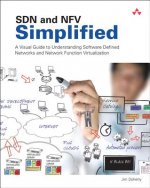
SDN and NFV Simplified
168.77 zł -5 % -

Brief Guide to Cloud Computing
47.21 zł -23 % -

Cloud Computing Bible
186.05 zł -5 % -

Learning SAP Analytics Cloud
290.23 zł -

Hands-On AWS Penetration Testing with Kali Linux
234.57 zł -

Cloud Computing Basics
285 zł -

Cloud Computing
217.09 zł -5 % -
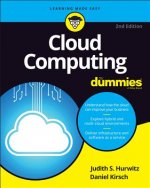
Cloud Computing For Dummies, Second Edition
163.64 zł -11 % -
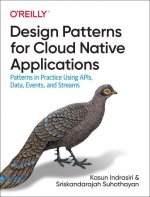
Design Patterns for Cloud Native Applications
260.69 zł -11 % -

Architectural Patterns
262.30 zł -
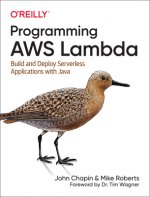
Programming AWS Lambda
260.69 zł -11 % -

Microsoft Azure
235.27 zł -

Amazon Simple Email Service Developer Guide
427.96 zł -

VCA-DCV - VMware Certified Associate-Data Center Virtualization on vSphere Study Guide - VCAD-510
159.02 zł -5 % -

Mastering OpenStack -
234.57 zł -
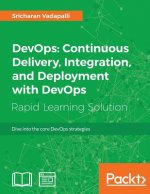
DevOps: Continuous Delivery, Integration, and Deployment with DevOps
211.06 zł -
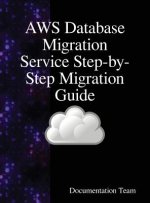
AWS Database Migration Service Step-by-Step Migration Guide
217.59 zł -

Cloud Computing
77.35 zł -11 % -

Learn Azure in a Month of Lunches
228.34 zł -5 % -

AWS CodeStar User Guide
217.59 zł -
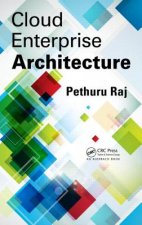
Cloud Enterprise Architecture
765.31 zł -

Testing Cloud Services
213.77 zł -

OpenStack: Building a Cloud Environment
425.05 zł -

Cloud Computing
385.36 zł -

Practical AWS Networking
211.06 zł -

DevOps with OpenShift
159.02 zł -5 % -

VMware Cloud on AWS
245.02 zł -4 % -

Learning Azure Functions
211.06 zł -

AWS Identity and Access Management User Guide
389.48 zł -5 % -

Azure Networking Cookbook
187.75 zł
zadowolonych klientów
Od roku 2008 obsłużyliśmy wielu miłośników książek, ale dla nas każdy był tym wyjątkowym.
Copyright! ©2008-24 libristo.pl Wszelkie prawa zastrzeżonePrywatnieCookies



 21 milionów książek
21 milionów książek Dostawa 10.99 zł
Dostawa 10.99 zł (32) 444 93 66 (8-15.30h)
(32) 444 93 66 (8-15.30h)